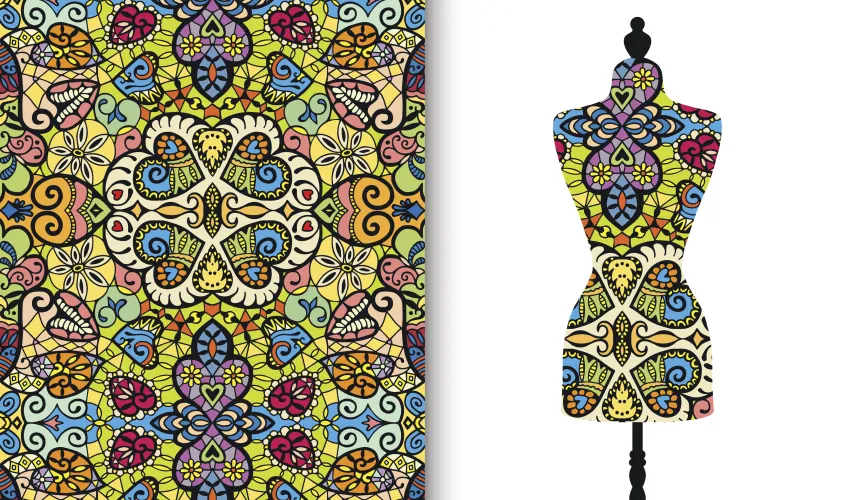
Fashion is political
The history of 19th century fashion and the history of 19th century retailing are inextricably linked. They are marked by epochal changes, respectively the birth of haute couture and the advent of the department store, which both took place in Paris at the time the restoration of the royal house moved the French capital once again to the center of the stage for political and cultural events, while urbanization transformed it into a market for luxury goods, especially textiles, clothing, and accessories. Charles Frederick Worth, the British father of haute couture, was a shop assistant in a Parisian department store (grand magasin) before opening his own atelier.
The first example of big business in retailing, department stores lowered unit prices and made profits by increasing the amount of transactions instead of making profits by imposing high prices on a limited amount of individual sales (as did traditional shops). The success of the new business formula, which soon developed in Europe and the US, reaching Japan in the early-20th century, relied on a huge increase in the variety and amount of merchandise offered to a plethora of customers. Therefore, department stores vertically integrated in clothing manufacturing and forced textile firms to increase their production. A wide array of innovations, such as captivating window displays, marked and fixed prices, sale promotions, and mail order catalogues, were introduced to attract as many customers as possible. For the first time in the history of retailing, a large variety of products was displayed in departments arranged in a sole location where customers could also enjoy concert halls, fashion shows, bookstores, restaurants, and tea-rooms. Making mail order purchases entailed novel remote services such as home delivery, return of purchased goods, and refund to dissatisfied customers.
According to economic, business, and fashion historians, department stores were crucial to prompt the process of fashion democratization. They kept consumers updated to the latest novelties in fashion and, even more important, they sold fashion which was the affordable alternative to haute couture. However, a closer look at mail order catalogues, a previously disregarded historical source, provides new insights into the department store's democratizing power. Far from being just the consumption "paradise", as Emile Zola titled his famous novel set in a Parisian grand magasin, they turned fashion shopping into a political issue. Customers who entered the enticing and appealing 19th century cathedrals of consumption were free to choose among a wide variety of prices, models, fabrics, and fashion accessories, to personalize them, to buy everything was needed to create their favorite clothing by themselves, from threads to trimmings, or to buy ready-to-wear outfits. To some extent, therefore, department stores made fashion a form of governance that located sovereignty in the free will of every citizen. By training consumers to exercise the right of choice, they trained them to become citizens.
The Historical Archives of Bocconi University (ASBOC) collect some copies of the mail order catalogues issued by Grandi Magazzini alle Città d'Italia, the department store founded by the Bocconi brothers in Milan in 1877 (https://asboc.unibocconi.it/oggetti/7011-cataloghi/). Along with the historical sources kept in the Archivio Brustio – La Rinascente and in Camera Nazionale della Moda Italiana historical archive, they provide scholars with a unique, invaluable source to study the history of Italian fashion as a multifaceted cultural, social, economic, and political phenomenon.
The golden age of the department store ended with World War One in Europe. The formula enjoyed renewed success in the 1950s, before intense competition from specialty retailers and mass discounters condemned them to decline. The process of fashion democratization they prompted is still ongoing, proving that fashion is not, and has never been, apolitical.